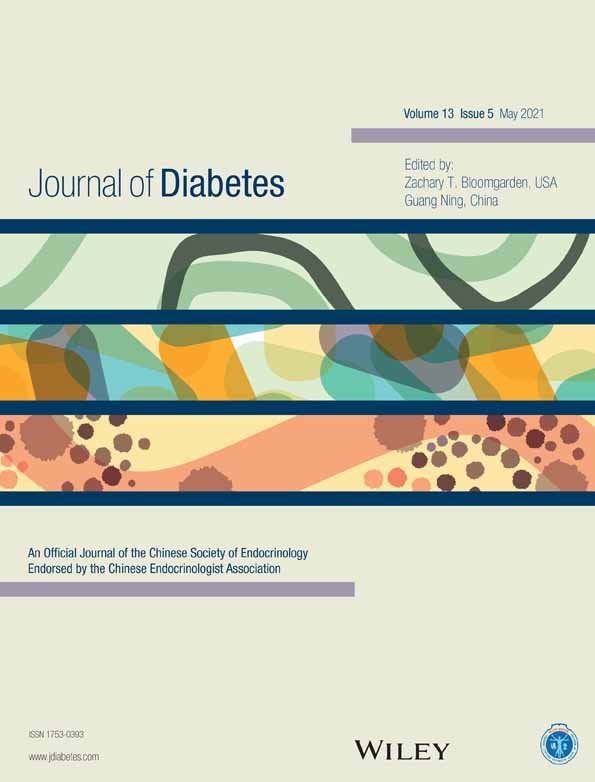Integrative analysis of hepatic metabolomic and transcriptomic data reveals potential mechanism of nonalcoholic steatohepatitis in high-fat diet–fed mice
高脂饮食小鼠的肝脏代谢组学及转录组学联合分析揭示非酒精性脂肪肝炎的潜在机制
Jinhua Wang and Junping Zheng contributed equally to this work.
Funding information: Emergency Special Project of National Key R&D Plan, Grant/Award Number: 2020YFC0845800; Hubei Provincial Department of Education, Grant/Award Number: Q20192004; National Natural Science Foundation of China, Grant/Award Number: 81903946; Science and Technology Commission of Hubei Province of China, Grant/Award Number: 2018ZYYD017
Abstract
enBackground
Due to the complex pathogenesis, the molecular mechanism of nonalcoholic steatohepatitis (NASH) remains unclear. In this study, we aimed to reveal the comprehensive metabolic and signaling pathways in the occurrence of NASH.
Methods
C57BL/6 mice were treated with high-fat diet for 4 months to mimic the NASH phenotype. After the treatment, the physiochemical parameters were evaluated, and the liver tissues were prepared for untargeted metabolomic analysis with ultraperformance liquid chromatography coupled with quadrupole time-of-flight mass spectrometry. Then, three relevant Gene Expression Omnibus (GEO) datasets were selected for integrative analysis of differentiated messenger RNA and metabolites.
Results
The levels of phosphatidylethanolamine (PE) (16:1(9Z)/20:4(5Z,8Z,11Z,14Z)), oleic acid, and sphingomyelin (SM) (d18:0/12:0) were significantly increased, and the content of adenosine was severely reduced in NASH mice. The integrated interpretation of transcriptomic and metabolomic data indicated that the glycerophospholipid metabolism and necroptosis signaling were evidently affected in the development of NASH. The high level of SM (d18:0/12:0) may be related to the expression of acid sphingomyelinase (ASMase), and the elevated arachidonic acid was coordinated with the upregulation of cytosol phospholipase A2 (cPLA2) in the necroptosis pathway.
Conclusions
In summary, the inflammatory response, necroptosis, and glycerophospholipid may serve as potential targets for mechanistic exploration and clinical practice in the treatment of NASH.
摘要
zh背景
由于非酒精性脂肪肝炎(Nonalcoholic steatohepatitis, NASH)的病因复杂, 其发病机制尚未阐明。本研究旨在揭示NASH发生过程中代谢及信号通路的总体变化。
方法
为模拟NASH表型, C57BL/6小鼠接受高脂饲料喂食4个月, 检测相关生理病理指标。然后, 收集肝脏组织, 用超高效液相色谱与四级杆飞行时间质谱联用技术对肝脏匀浆液进行非靶向代谢组学分析。同时, 加入3个转录组数据集(Gene Expression Omnibus, GEO)对NASH小鼠的差异mRNA和代谢化合物进行联合分析。
结果
代谢组学研究结果表明, NASH小鼠的磷脂酰乙醇胺(PE) (16:1(9Z)/20:4 (5Z、8Z、11Z、14Z)]、油酸和鞘磷脂(SM) (d18:0/12:0)水平显著升高, 而腺苷含量严重降低。综合转录组学和代谢组学数据, 发现NASH发生后甘油磷脂代谢和坏死凋亡信号通路明显改变。联合分析表明, NASH条件下SM (d18:0/12:0)含量增加可能与酸性鞘磷脂酶(ASMase)的表达有关, 花生四烯酸的升高可能与坏死性凋亡通路中细胞溶胶磷脂酶A2 (cPLA2)上调有关。
结论
炎症反应、坏死凋亡和甘油磷脂可能是NASH发病机制探索和临床治疗实践的重要切入点。




